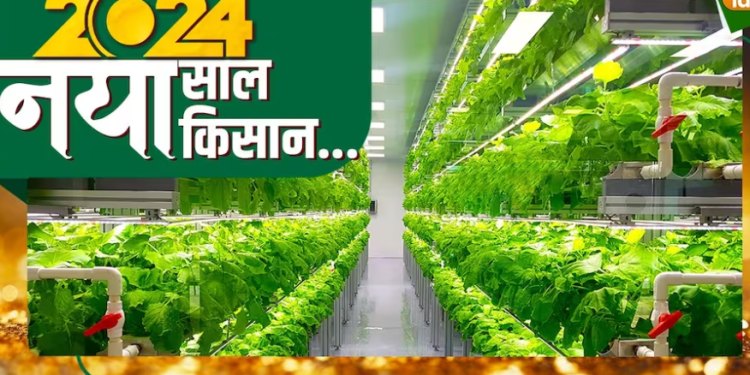#VerticalFarming #AgricultureInnovation #SustainableAgriculture #Hydroponics #Aeroponics #ResourceConservation #FoodSecurity #GovernmentSubsidies #FutureofFarming
Vertical farming, a concept introduced in 1999, has emerged as a potential game-changer in modern agriculture. Originating from the visionary idea of utilizing skyscrapers for agricultural purposes, vertical farming has evolved into a sophisticated technique that holds immense promise for the future of food production.
According to Dr. Avani Kumar Singh, Principal Scientist at PUSA, vertical farming isn’t entirely novel. Traditional farming methods in villages often involved vertical cultivation of vegetables. However, the contemporary approach takes it to a whole new level, with two primary methods: hydroponics and aeroponics.
Hydroponics, a soilless method, enables precise control over water, temperature, and moisture levels. It involves cultivating plants in mediums like perlite, coco peat, and vermiculite, with nutrients supplied directly through a liquid base. On the other hand, aeroponics delivers nutrients to plants through a nutrient-rich mist, optimizing resource usage and minimizing waste.
One of the most significant advantages of vertical farming is its potential to significantly increase yield while conserving resources. With traditional farming facing challenges such as land scarcity and water shortages, vertical farming offers a viable solution. Studies indicate that vertical farming can boost crop production by up to four to five times compared to conventional methods.
Moreover, the setup costs, although initially high, can be offset by long-term benefits. Government subsidies, covering up to 50% of setup costs for areas up to two acres, make vertical farming an attractive option for farmers. Additionally, the use of controlled environments, such as greenhouses or polyhouses, further enhances efficiency and productivity.
However, challenges persist, including the high initial investment required for setup and the limited market rates for some produce. While vertical farming presents a promising avenue for young farmers, the transition from traditional methods can be daunting for many.
To fully harness the potential of vertical farming, there’s a need for widespread education and training. Integrating this technology into school, college, and professional curricula can empower individuals to adopt and adapt these techniques effectively.
Vertical farming holds immense promise as a sustainable solution to the challenges facing traditional agriculture. By maximizing yield, minimizing environmental footprint, and ensuring food security, it paves the way for a brighter, more resilient future in farming.










